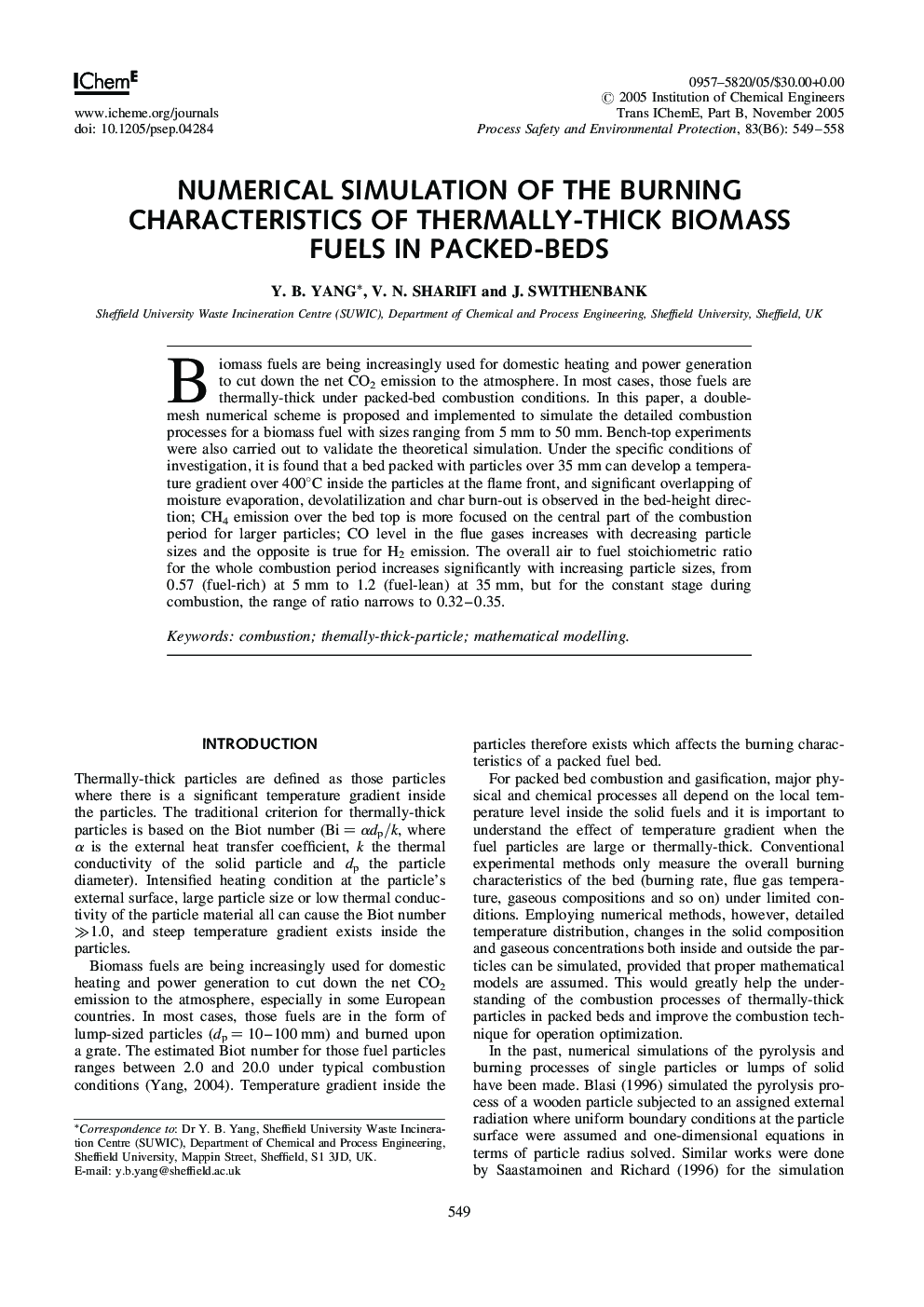| Article ID | Journal | Published Year | Pages | File Type |
|---|---|---|---|---|
| 10374111 | Process Safety and Environmental Protection | 2005 | 10 Pages |
Abstract
Biomass fuels are being increasingly used for domestic heating and power generation to cut down the net CO2 emission to the atmosphere. In most cases, those fuels are thermally-thick under packed-bed combustion conditions. In this paper, a double-mesh numerical scheme is proposed and implemented to simulate the detailed combustion processes for a biomass fuel with sizes ranging from 5 mm to 50 mm. Bench-top experiments were also carried out to validate the theoretical simulation. Under the specific conditions of investigation, it is found that a bed packed with particles over 35 mm can develop a temperature gradient over 400°C inside the particles at the flame front, and significant overlapping of moisture evaporation, devolatilization and char burn-out is observed in the bed-height direction; CH4 emission over the bed top is more focused on the central part of the combustion period for larger particles; CO level in the flue gases increases with decreasing particle sizes and the opposite is true for H2 emission. The overall air to fuel stoichiometric ratio for the whole combustion period increases significantly with increasing particle sizes, from 0.57 (fuel-rich) at 5 mm to 1.2 (fuel-lean) at 35 mm, but for the constant stage during combustion, the range of ratio narrows to 0.32-0.35.
Keywords
Related Topics
Physical Sciences and Engineering
Chemical Engineering
Chemical Health and Safety
Authors
Y.B. Yang, V.N. Sharifi, J. Swithenbank,
